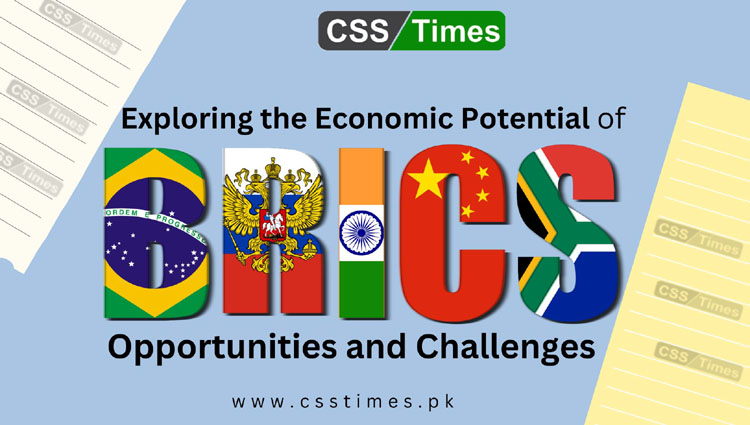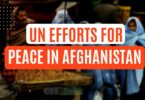Exploring the Economic Potential of BRICS Countries: Opportunities and Challenges
Introduction:
BRICS is an acronym for the five emerging economies of Brazil, Russia, India, China, and South Africa. These countries are widely recognized as the engines of global economic growth in the 21st century. Together, they represent over 40% of the world’s population and account for approximately one-fifth of the global GDP. The economic potential of BRICS countries has attracted significant attention from investors, businesses, and policymakers worldwide. In this article, we will explore the economic potential of BRICS countries, analyzing their strengths, weaknesses, opportunities, and challenges.
Overview of BRICS:
BRICS countries are characterized by their large and growing economies, rapid industrialization, and urbanization. They are rich in natural resources, have a young and dynamic workforce, and are strategically located in key regions of the world. China is the largest economy of BRICS, followed by India, Russia, Brazil, and South Africa. These countries are also members of other multilateral organizations such as G20, WTO, and IMF, where they play a significant role in shaping global economic policies.

Opportunities for Investment:
BRICS countries offer a plethora of investment opportunities for domestic and foreign investors. They have robust and diversified economies, strong consumer markets, and an abundance of natural resources. For instance, Brazil is a leading producer of coffee, soybeans, and sugar, while Russia is known for its oil and gas reserves. China is the world’s largest exporter of goods and services, while India is home to a thriving IT industry. South Africa is a leading producer of gold, diamonds, and other minerals. The BRICS countries are also investing heavily in infrastructure, renewable energy, and technology, creating new business opportunities for investors.
Challenges:
Despite their economic potential, BRICS countries face several challenges that could hinder their growth prospects. For instance, corruption, bureaucracy, and lack of transparency are significant obstacles in some countries, affecting business and investment confidence. Inflation, high debt levels, and weak currencies also pose significant challenges, especially in Brazil and South Africa. Furthermore, political instability, trade barriers, and protectionist policies could hamper economic growth in the long run. It is essential for BRICS countries to address these challenges effectively to maintain their economic momentum.
Read also: China-Russia Relations and the US-China-Russia Triangle
BRICS Cooperation:
BRICS countries have established a cooperative framework to enhance economic and political ties among themselves. The first BRICS summit was held in Russia in 2009, where the leaders of the five countries agreed to work together to promote economic growth and development. Since then, BRICS has evolved into a significant platform for promoting South-South cooperation and advancing global economic governance. BRICS countries have established various initiatives, such as the New Development Bank (NDB), the Contingent Reserve Arrangement (CRA), and the BRICS Business Council, to facilitate trade, investment, and economic cooperation.

The New Development Bank (NDB):
The New Development Bank (NDB) is a multilateral development bank established by BRICS countries in 2014. The bank aims to mobilize resources for infrastructure and sustainable development projects in BRICS and other emerging economies. The NDB has an authorized capital of $100 billion, with an initial subscribed capital of $50 billion. It has funded several projects in member countries, such as the Mumbai Metro Rail project in India and the Novorossiysk Commercial Sea Port project in Russia.

Contingent Reserve Arrangement (CRA):
The Contingent Reserve Arrangement (CRA) is a framework established by BRICS countries to provide a safety net against external economic shocks. The CRA is a pool of $100 billion, which can be used by member countries to address balance of payment crises. In case of a balance of payment crisis, a member country can access the CRA funds without going through the IMF, which is perceived by some BRICS countries as a biased institution that favors Western countries. The CRA is seen as a significant step towards creating a new global financial architecture that is more inclusive and representative of the developing world.
Read also: Why Khalistan Movement is Relevant Today
BRICS Business Council:
The BRICS Business Council is a platform established to promote trade and investment among the member countries. The council is made up of 25 business leaders from each member country, representing various sectors such as agriculture, energy, finance, and technology. The council aims to identify and promote business opportunities within BRICS and other emerging economies. It also provides policy recommendations to enhance the business environment and remove trade barriers.
Read also: The Shocking Assassinations That Shook the World
Conclusion:
In conclusion, BRICS countries have enormous economic potential, offering diverse investment opportunities and contributing to global economic growth. However, they also face several challenges that could hinder their growth prospects, such as corruption, inflation, political instability, and trade barriers. To maintain their economic momentum, BRICS countries need to address these challenges effectively and continue to enhance their economic cooperation. The NDB, CRA, and BRICS Business Council are examples of successful initiatives that have strengthened BRICS economic ties and created new opportunities for trade and investment. As the world becomes more multipolar, BRICS countries are poised to play an increasingly significant role in shaping global economic policies and promoting sustainable development.












I am MA political science ki hoi ha